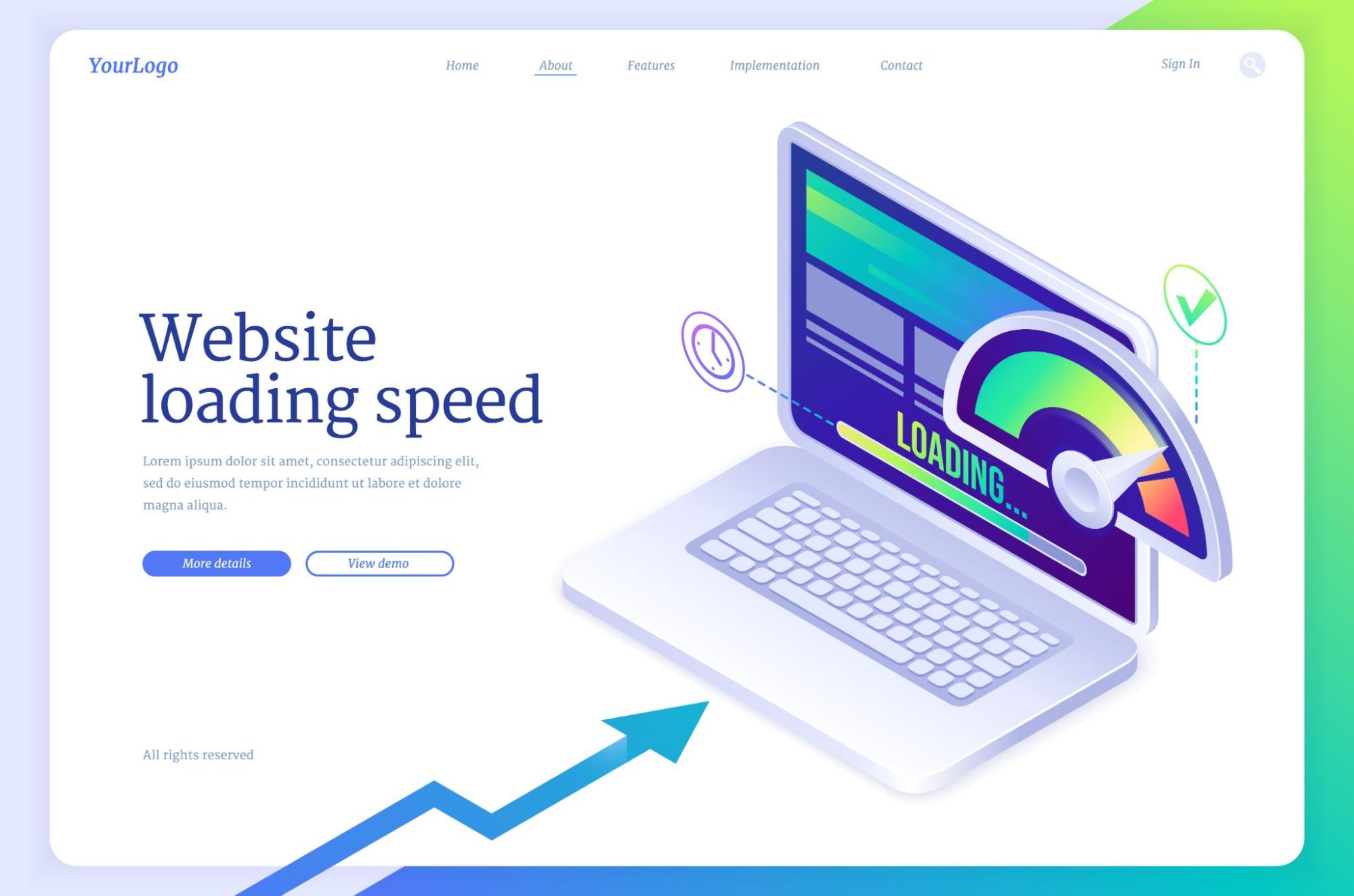Is your website generating real business from your local area, or is it just collecting dust? Many small businesses invest time and money in building a website, only to discover it’s not effectively attracting new leads.
To turn your website into a local lead magnet, you need more than just good design or basic SEO.
It’s about creating value for your audience, understanding what your local community needs, and giving them a reason to connect with your business.
By using localized content, the right lead magnets, and smart targeting, you can turn casual visitors into loyal customers right from your homepage.
In this article, we’ll show you step-by-step how to attract, engage, and convert local visitors using proven lead generation strategies tailored for your area.
How to Turn Your Website Into a Local Lead Magnet in 11 Steps

Want to attract more local customers through your website? This guide breaks down 11 proven strategies to turn your site into a powerful local lead magnet. From creating localized content to using high-converting forms and smart SEO, you'll learn exactly how to engage and convert nearby visitors into real leads.
Identify Your Target Local Audience
Understand who your ideal local customers are. Before you can attract local leads, you need to know exactly who you’re targeting. Building a clear picture of your ideal customer helps you create content and offers that speak directly to their needs.
Define your ideal local customer persona
Start by building a customer profile that reflects your best local clients.
- Age, gender, income level
- Local profession or lifestyle
- Buying habits and online behavior
- Common concerns or service needs
Use local demographics and location-specific interests
Dig into local data to see what your audience truly cares about.
- Use Google Trends and local census data
- Study local events, interests, and behaviors
- Check local Facebook groups or community forums
Align messaging with local pain points or needs
Make sure your message speaks directly to your audience’s real-life problems.
- What’s missing in local service options?
- What questions do customers often ask?
- How can your business solve these problems better or faster?
Choose Your Lead Magnet Type

Pick the right offer to attract local customers. A lead magnet is something valuable you give away in exchange for someone’s contact info. Choosing the right type of lead magnet helps capture the attention of your ideal local audience.
Examples: eBooks, checklists, discount codes, local guides
Here are some tried-and-true ideas you can localize:
- A “Local Homeowner’s Guide to [Your Service]”
- A checklist for seasonal maintenance in your city
- Exclusive discount codes for residents in a specific area
- A PDF guide to events, venues, or hidden gems near your business
Ensure relevance to your service area and industry
Your lead magnet should match what your business offers and reflect local relevance.
- Tie content to your services (e.g., skin treatment tips if you’re a skincare clinic)
- Mention specific towns or boroughs in your messaging
- Offer value based on your local weather, trends, or culture
Create a Localized Lead Magnet
Make your offer feel personal and community-based
A generic offer won’t convert as well as one tailored to your local area. Adding local flavor shows your business truly understands the community and its needs.
Include city or neighborhood names in titles/content
Make your lead magnet feel like it was built just for them.
- Example: “Top 10 Skincare Tips for East London Residents”
- Mention nearby landmarks, neighborhoods, or local lingo
Add local data, maps, or area-specific advice
Use local knowledge to create value that a national brand can’t.
- Add local climate tips (e.g., sun care for hot areas)
- Include maps or walking routes relevant to your service
- Share local laws or recommendations specific to your industry
Highlight local case studies or testimonials
People trust businesses that are proven in their area.
- Share before-and-after success stories from real clients
- Use first names, locations, and photos (with permission)
- Show how your service helped someone just like them nearby
Choose the Right Format

Select a format that fits your audience’s habits. The format of your lead magnet can determine how many people actually engage with it. Choosing the right style ensures your audience can easily access and enjoy your offer.
Match format to audience preference (PDF, quiz, video, etc.)
Think about how your local customers prefer to consume content.
- PDF guides or checklists for easy download and printing
- Quick quizzes to boost interaction and shareability
- Short videos for visual learners
- Infographics for fast, bite-sized information
Ensure mobile-friendly and fast-loading formats
Most local searches happen on mobile, so your content must be easy to access on any device.
- Use responsive designs that adjust to all screen sizes
- Keep file sizes small for faster loading
- Test downloads and videos on both mobile and desktop
Use a Compelling Headline
Grab attention with clear, local-focused language. Your headline is often the first thing a visitor sees. It should spark curiosity, highlight a benefit, and connect with the local community.
Focus on urgency, local relevance, and benefits
A strong headline makes the reader feel like they need to act now.
- Example: “Get Your Free Summer Skin Care Guide for Manchester Residents”
- Add urgency with words like “now,” “today,” or “limited time”
- Highlight the problem you’re solving or the value you’re offering
Include geographic terms to boost local SEO
Adding location-specific keywords helps your content rank in local search.
- Mention your city, neighborhood, or local landmarks
- Use terms your community recognizes (e.g., “Shoreditch Guide” instead of just “City Guide”)
- Keep it natural, avoid keyword stuffing.
Decide on Image/Video Requirements
Use visuals that make your lead magnet feel truly local. Images and videos can make your offer more engaging and trustworthy. Using local visuals shows you’re part of the community.
Use high-quality local imagery (cityscapes, local business scenes)
Authenticity matters when building local trust.
- Show real local landmarks and familiar places
- Feature your business, staff, or happy customers
- Use professional-quality images for a polished look
Consider video intros with location-based messaging
Videos can quickly capture attention and create a personal connection.
- Start with a greeting that mentions your location
- Film in recognizable local spots
- Keep it short, ideally under one minute, for maximum engagement
Build a Clear Call to Action (CTA)

Tell your visitors exactly what to do next. A strong CTA moves your audience from interest to action. Make it clear, local, and easy to find.
Use action-driven, location-specific CTAs
Adding your city or service area into your CTA makes it feel more personal.
- Say exactly what users will get (e.g., “Download”, “Claim”, “Access”)
- Mention your city or area: “Get Your [City] Skincare Guide”
- Keep it short and focused on the benefit
Examples:
- “Download Your Free London Beauty Checklist”
- “Book Your Brentford Skin Consultation Today”
- “Claim £25 Off Your Birmingham Hair Removal”
Place CTAs above the fold and after content sections
Your CTA should be easy to find at every step.
- Place a CTA near the top of the page (no scrolling needed)
- Repeat it at the end of important sections
- Use buttons or contrasting colours to make it stand out
Optimize Your Lead Generation Form
Make your form simple, quick, and trustworthy. A long or confusing form can scare people off. Keep it short and give users confidence in sharing their info.
Minimize fields (Name, Email, ZIP Code)
Only ask for what you really need to follow up.
- Just 2–3 fields: name, email, and postal code is often enough
- Avoid asking for phone numbers unless absolutely needed
- The shorter the form, the higher the sign-up rate
Add trust signals (e.g., “100% privacy” or “local expert response”)
Reassure people their info is safe and used locally.
- Add a small line below the form: “100% privacy – No spam”
- Mention local service: “A local expert will follow up within 24 hours”
- Use small badges (like SSL secure or Google rating stars)
Use smart forms with location autofill or dropdown
Make filling the form easier with smart tools.
- Autofill ZIP/postcode based on IP location
- Add dropdowns with city or neighborhood options
- Use conditional logic to show/hide fields based on answers
Build an Effective Thank You Page
Your job isn’t done after someone signs up. A thank you page is a perfect place to keep the momentum going. Deliver value and invite the user to take another step.
Confirm submission and deliver the lead magnet
Short intro: Let people know the form worked and give them what they asked for.
- Show a thank-you message with a confirmation line
- Provide direct download or email delivery
- Include a preview image or short description of what they’ll get
Add a local service upsell or booking link
Short intro: Offer an extra step that brings them closer to becoming a customer.
- Suggest a free consultation or service quote
- Add a button: “Book Your Free [City] Skin Analysis Now”
- Mention local service hours or team availability
Encourage local social follows or reviews
Short intro: Invite them to follow or share to grow your local visibility.
- Include links to your social media pages
- Ask for a Google or Facebook review
- Add local hashtags if you want them to share on social
Promote Your Lead Magnet Locally
Get the word out where your local audience is active. A great lead magnet means nothing if no one sees it. Use local platforms to spread the word.
Run local Google/Facebook ads
Target your exact service area with ads.
- Use “geo-fencing” to show ads only in your area
- Target by interest, age, or ZIP code
- Promote with a direct benefit headline and image
Post in local forums, groups, and listings
Share value where your audience is already active.
- Post your lead magnet in Facebook community groups
- Join local forums and contribute, then share your guide as a helpful resource
- Use Nextdoor, Reddit, or neighborhood newsletters
Partner with local influencers or businesses
Work with trusted local voices to grow your reach.
- Ask local bloggers or Instagrammers to share your lead magnet
- Offer mutual promotions with nearby businesses
- Sponsor small local events and link your guide
Optimize Your Website for Local Search

Help local people find you in search results. Good local SEO means more eyes on your site, which means more leads. Make sure your website is set up to rank locally.
Use local schema markup
Schema helps search engines understand your content.
- Add the LocalBusiness schema to your homepage.
- Use the Service schema to show what you offer.
- Add FAQ schema to boost visibility in Google
Add NAP (Name, Address, Phone) to all pages
Consistent contact info builds trust with both users and search engines.
- Place NAP in the header or footer of every page
- Match NAP exactly with your Google Business Profile
- Use click-to-call for the phone number on mobile
Create service area-specific landing pages
Rank in nearby areas by targeting each with its own page.
- Create separate pages for each major service area.
- Include city names, local case studies, and location-specific offers.
- Link these pages from your homepage and main nav.
Conclusion
Turning your website into a local lead magnet doesn’t require fancy tools or a huge marketing budget. It starts with understanding your audience, creating valuable content that speaks to their needs, and guiding them with clear calls to action. When you combine local relevance with smart formats, trust-building visuals, and strong SEO, your website becomes more than just an online brochure; it becomes your best local sales tool.
Each step in this guide is designed to help you build stronger connections in your community and bring in consistent, high-quality leads. Whether you're offering a free guide, a special promotion, or expert advice, what matters most is making it easy for local visitors to say “yes” to your offer.
Now is the time to stop missing out on local traffic. Put these tips into action and start turning your website into a magnet for the people who matter most, your local customers.
Frequently Asked Questions (FAQs)
A regular lead magnet targets a broad audience, while a local lead magnet is tailored to a specific geographic area. It includes local terms, examples, and relevance to the community to attract nearby customers.
You can track performance using tools like Google Analytics, UTM codes, and CRM systems. Monitor downloads, form submissions, and conversions from your service area to measure results.
Yes! Service providers like salons, clinics, and consultants can use lead magnets such as checklists, free consultations, or city-specific guides to build trust and generate inquiries.
If your business operates in multiple cities or regions, it’s a good idea to create localized versions of your lead magnet. This improves relevance, engagement, and local SEO performance.
Popular tools include Canva (for design), Google Docs (for eBooks and checklists), Typeform or Jotform (for quizzes), and ConvertKit or Mailchimp for delivery and email capture.
Review and update your lead magnet at least twice a year or whenever local trends, laws, or services change. This ensures your content remains accurate and useful to local users.

